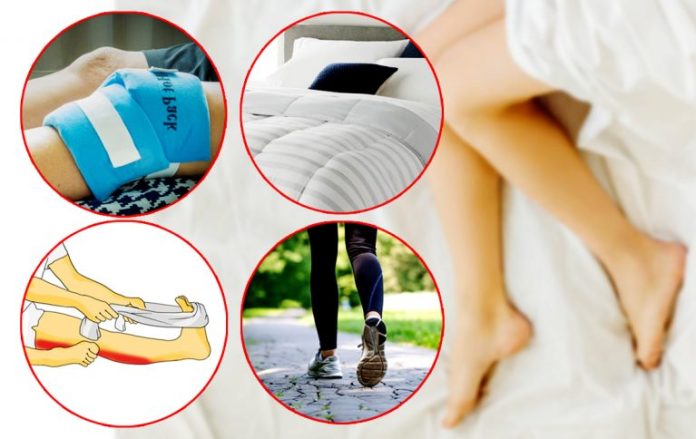Leg pain can be a debilitating condition that affects a large number of people, regardless of age or gender. It can be caused by a variety of factors such as injury, nerve damage, and inflammation. Leg pain can be an acute or chronic problem that can impact your daily routine and overall quality of life. If you’re one of those who suffer from leg pain, this article is for you. In this guide, we will discuss some effective remedies that can help you get rid of leg pain immediately.
Stretching exercises
Stretching exercises are a great way to alleviate leg pain. They help to improve blood circulation, increase flexibility, and reduce muscle tension. Simple exercises such as hamstring stretch, calf stretch, and quadriceps stretch can be very effective in reducing leg pain. These exercises should be done gently and slowly, and each stretch should be held for about 15 to 20 seconds.
Massage Therapy
Massage therapy can help to reduce pain and inflammation in the legs. It works by increasing blood flow to the affected area and loosening up tight muscles. A professional massage therapist can help you to get the most out of your massage. However, if you don’t have access to a therapist, you can also try self-massage techniques such as using a foam roller or tennis ball to massage the affected area.
Heat and Cold Therapy
Heat and cold therapy can also be very effective in reducing leg pain. Applying heat can help to relax tight muscles and improve blood flow, while applying cold can help to reduce inflammation and numb the affected area. You can use a hot water bottle, heat pad, or warm towel for heat therapy, and a cold pack or ice pack for cold therapy. You should apply each therapy for about 15 to 20 minutes at a time.
Over-the-counter Pain Relievers
Over-the-counter pain relievers such as ibuprofen, aspirin, or acetaminophen can help to reduce leg pain. These medications work by reducing inflammation and blocking pain signals in the body. However, it’s important to follow the recommended dosage and not to exceed the maximum daily limit.
Rest and Elevation
Resting the affected leg and elevating it can help to reduce pain and swelling. You should avoid standing or walking for prolonged periods of time, and try to keep your leg elevated above the level of your heart as much as possible. This will help to improve blood flow and reduce inflammation in the affected area.
Compression Stockings
Compression stockings can help to reduce pain and swelling in the legs. They work by applying pressure to the affected area, which helps to improve blood flow and reduce inflammation. Compression stockings are available in different sizes and strengths, so it’s important to choose the right one for your needs.
Acupuncture
Acupuncture is a traditional Chinese medicine technique that involves inserting thin needles into the skin to stimulate specific points on the body. It can help to reduce pain and inflammation in the legs by promoting the release of natural painkillers in the body. However, it’s important to choose a licensed and experienced acupuncturist to ensure safety and effectiveness.
Yoga
Yoga is a gentle form of exercise that can help to improve flexibility, reduce muscle tension, and alleviate leg pain. Specific yoga poses such as downward-facing dog, pigeon pose, and triangle pose can be very effective in reducing leg pain. However, it’s important to practice yoga under the guidance of a trained yoga instructor to avoid injury.
Conclusion
Leg pain can be caused by various factors, such as muscle strain, fatigue, or a medical condition. While the pain can be very uncomfortable, there are several ways to alleviate the discomfort without medical intervention. Home remedies such as rest, heat or cold therapy, stretching, and over-the-counter pain medications can be used to reduce leg pain and improve overall comfort.
FAQs
Q1. What can I do to relieve leg pain?
Answer: Rest, applying heat or cold therapy, stretching, and taking over-the-counter pain medications can help manage leg pain.
Q2. What are the symptoms of leg pain?
Answer: Common symptoms of leg pain include aches, cramps, stiffness, and swelling.
Q3. When should I see a doctor for leg pain?
Answer: If the leg pain is severe and persists for more than a few days, or if it is accompanied by other symptoms such as fever or swelling, it is important to see a doctor for a diagnosis and treatment.
Khalid Irfan is a Fitness expert who enjoys spending time in gym. He also enjoys being in the outdoors and exploring new opportunities whenever they arise as well as researching new topics to expand his horizons.

